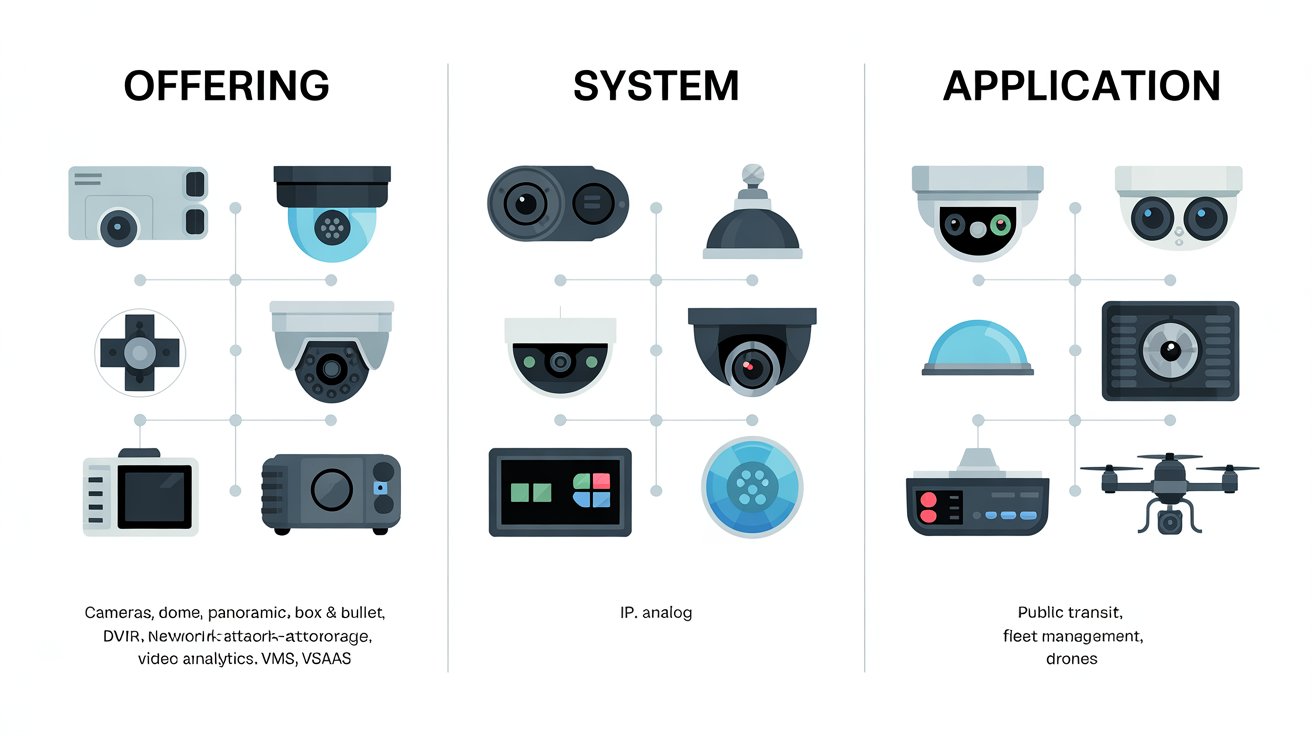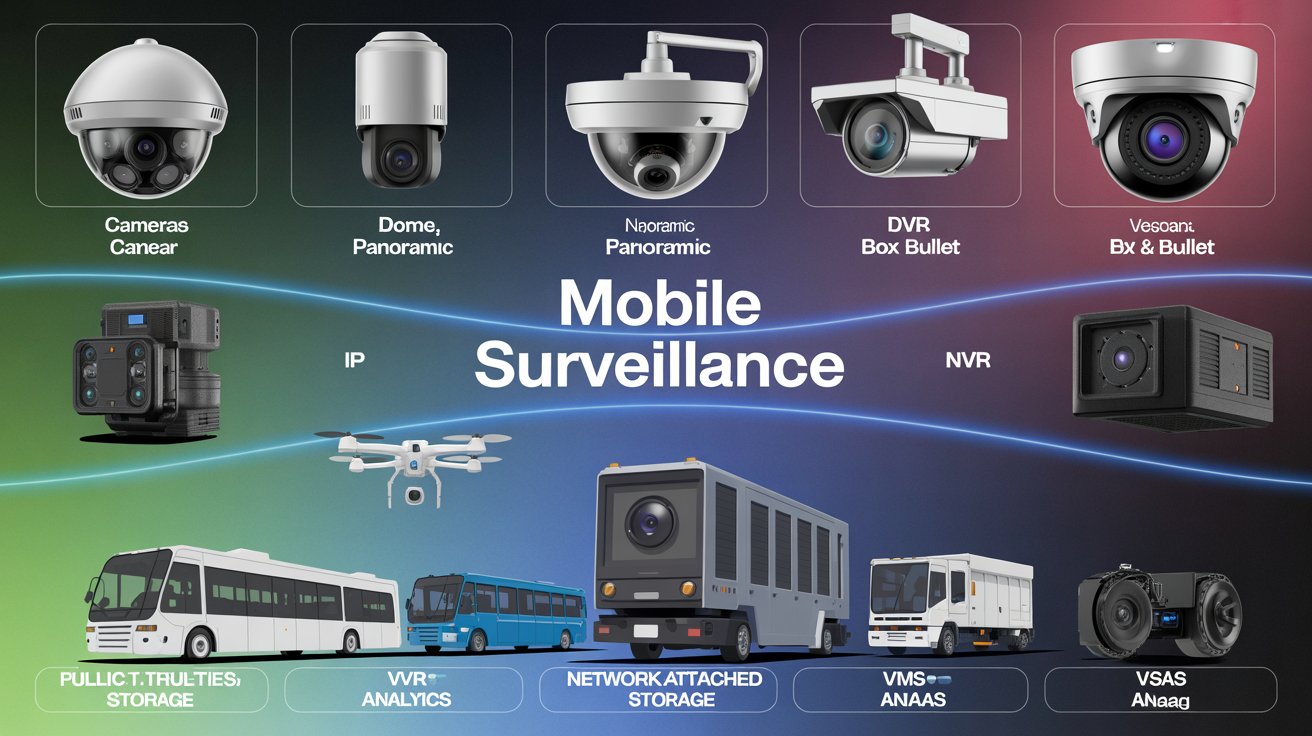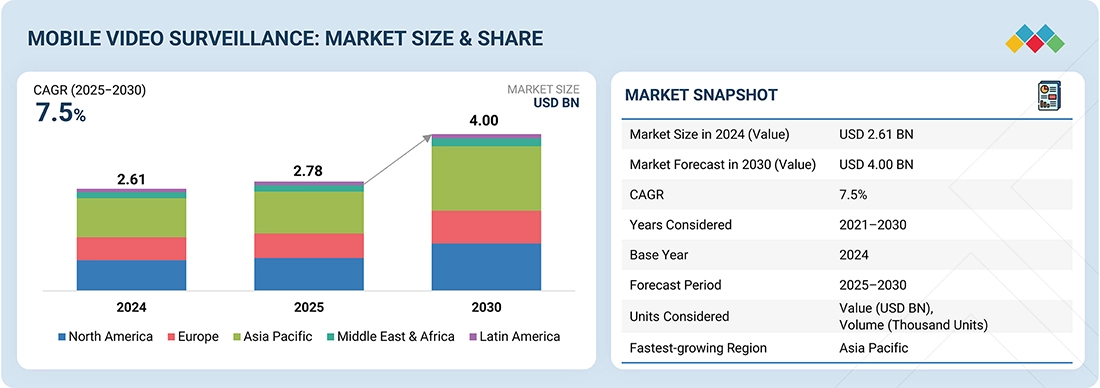The Mobile Video Surveillance Market has emerged as a transformative force in defense and border security operations, driven by the growing need for real-time situational awareness, rapid threat detection, and seamless data integration across mission-critical environments. As geopolitical tensions rise and border areas face increasing infiltration attempts, military and security agencies worldwide are shifting from static monitoring systems to advanced mobile surveillance platforms that offer flexibility, precision, and enhanced visibility. These solutions integrate high-definition cameras, AI-powered analytics, ruggedized communication systems, and mobility platforms such as vehicles, drones, unmanned ground vehicles (UGVs), and body-worn cameras, enabling defense forces to monitor vast and challenging terrains with greater effectiveness. As a result, the adoption of mobile video surveillance systems has become a strategic priority for strengthening national security and operational readiness.
Download PDF Brochure @ https://www.marketsandmarkets.com/pdfdownloadNew.asp?id=28819736

The growing complexity of border threats, including smuggling, illegal crossings, terrorism, and human trafficking, has heightened the need for intelligent surveillance systems capable of operating in dynamic and often hostile environments. Mobile video surveillance systems address these challenges by providing defense forces with unparalleled visibility and intelligence across remote border regions. These systems help capture real-time, high-quality video feeds that can be transmitted to command centers using secure, encrypted communication networks, facilitating quick analysis and timely decision-making. The integration of thermal imaging, infrared capabilities, and night-vision technologies further extends operational capabilities in low-light or adverse weather conditions, making mobile surveillance a critical component in round-the-clock border monitoring strategies.
Another key driver of the market is the increasing use of artificial intelligence and analytics in defense surveillance operations. AI-enabled mobile video solutions enhance border and defense monitoring by automating tasks such as motion detection, anomaly detection, intruder identification, and behavior analysis. Machine learning algorithms can identify suspicious activities or potential threats in real time, eliminating the need for constant manual monitoring and reducing human errors. This shift toward intelligent surveillance supports defense agencies in managing large volumes of video data while improving response accuracy and operational efficiency. As defense operations become more data-driven, mobile video systems are evolving into advanced intelligence platforms that help predict, prevent, and neutralize threats.
Inquiry Before Buying @ https://www.marketsandmarkets.com/Enquiry_Before_BuyingNew.asp?id=28819736

The expansion of mobile surveillance solutions in defense and border security is also fueled by the increasing adoption of unmanned aerial vehicles (UAVs), unmanned ground vehicles, and mobile command units. UAVs equipped with high-resolution cameras and long-range communication systems are now widely used for patrol missions, reconnaissance, terrain mapping, and rapid response efforts. These drones can cover vast border areas that are otherwise difficult or risky for human forces to access. Mobile command vehicles equipped with centralized monitoring systems serve as on-the-move operations centers, offering defense teams the ability to assess threats, coordinate actions, and deploy resources instantly. Such mobile-enabled approaches represent a shift toward agile, technology-enhanced border security operations.
Interoperability and enhanced communication capabilities are becoming critical features in modern defense surveillance systems, further expanding the market potential for mobile video technologies. Defense agencies increasingly require systems that can seamlessly integrate with existing communication networks, sensor platforms, and data infrastructures. Mobile video surveillance systems with 4G/5G support, satellite communication compatibility, and secure broadband connectivity allow field teams to collaborate in real time, ensuring unified and coordinated security responses. The rise of multi-domain operations, where air, land, and digital assets work together, is accelerating the adoption of interconnected surveillance technologies that amplify operational strength.
View detailed Table of Content here – https://www.marketsandmarkets.com/Market-Reports/mobile-video-surveillance-market-28819736.html

Despite the growing demand, the mobile video surveillance market in defense and border security faces several challenges. Cybersecurity concerns remain a top priority, as video streams transmitted through digital networks are vulnerable to hacking and unauthorized access. Manufacturers are increasingly investing in robust encryption techniques, secure cloud platforms, and network hardening solutions to ensure the protection of sensitive defense data. Additionally, the high cost of advanced mobile surveillance equipment, especially when integrated with AI, thermal imaging, and rugged hardware, may restrict adoption in budget-constrained regions. However, rising defense budgets and the prioritization of border security modernization across countries are mitigating these constraints.
Looking ahead, the mobile video surveillance market is expected to see significant expansion as defense agencies continue to adopt smart surveillance ecosystems. The integration of robotics, edge computing, and autonomous surveillance platforms will further enhance capabilities by enabling real-time data processing directly at the source. Mobile surveillance systems will evolve to support predictive monitoring, autonomous patrolling, and enhanced multi-sensor data fusion, driving deeper intelligence and operational superiority.

